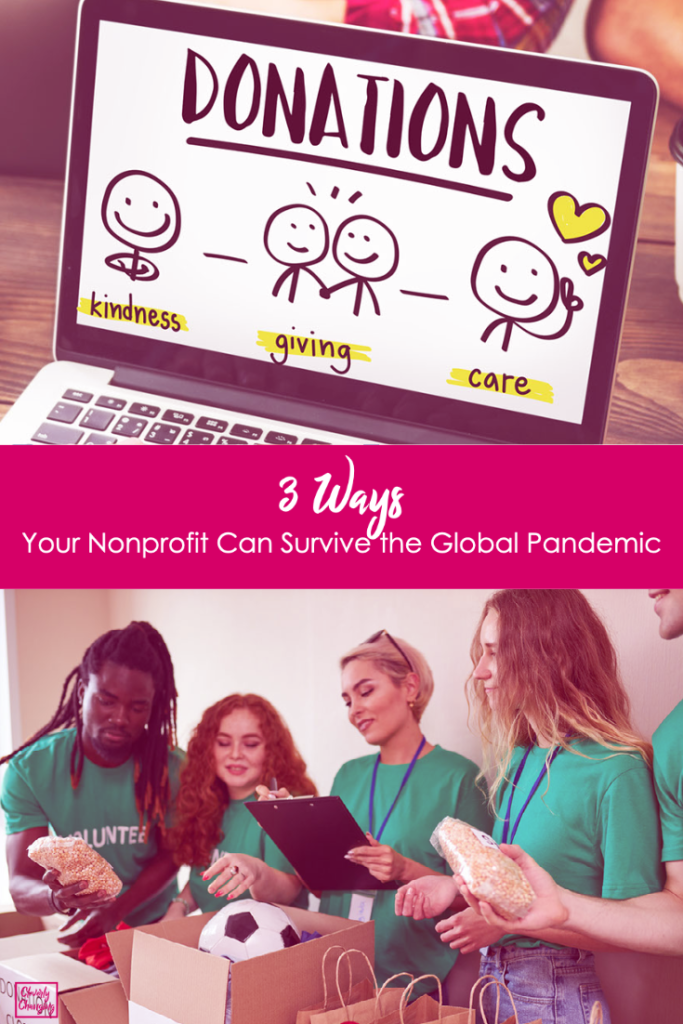The global health crisis has been tough for virtually all sectors of industry, but especially the nonprofit sector. A lot of nonprofits have reported fewer donors, smaller average donations, and issues with cash reserves. The world has been turned upside down in what seems like a flash, and fundraising options have been limited by restrictions, but I assure you that your nonprofit Can Survive. There’s also constant uncertainty looming, which can make forecasting very difficult.
Giving up is not an option for most nonprofits, however, and if you want to keep existing, you will have to find ways to restructure your operation so you can meet new challenges. Here are a few things you can do to keep your nonprofit running and survive the global pandemic.
Look at Remote Fundraising Options
The lack of facilities and vaccination/capacity restrictions have made traditional fundraisers difficult to almost impossible to hold recently. We also don’t know what’s going to happen in the next months or years. This is why you should try focusing on remote fundraising options and consider things like virtual fundraisers.
You could host a virtual fundraising gala if you want something simple that will not require too much planning or something more elaborate like a virtual walk-a-thon where you’d have attendees log how many miles they walked during a specific period while documenting their journey.
If you want advice on how to hold virtual fundraising events and make them work, you can check out Givebutter’s website. Not only does it tell you exactly how to set up virtual fundraising events step by step, but there are also a few virtual fundraising ideas that you can try. It explains exactly what you should do before events to make them successful and some of the mistakes you should avoid.
Make Sure Your Organization Has a Real Impact
You can’t waste time and effort on losing or underperforming initiatives. Everything you do from now on has to count, and you will have to look at the real impact of your organization’s program before you move forward.
The first thing you should do is try to gather as much input from people within your organization. We’re talking volunteers, board members, staff, and everyone else that’s gravitating around it. You’ll need to ask them and yourself some serious questions too.
One of the things you should look at is what would happen if your organization stopped existing tomorrow. Who would suffer the most? Will anyone notice? Who are your main constituents and how are they benefiting from your effort? Are you having a noticeable impact on your community?
The better you answer these questions, the more you’ll be able to identify priorities and let them guide your strategy.
Go beyond the big picture. You will need to have candid data-driven discussions on the state of your current programs and how they may need to be adjusted to meet new challenges. You’ll also need to record constituent reports, work with focus groups, and perform program evaluations to monitor results on the ground as concretely as possible.
Stakeholders will often assume that all programs bring value at some level, but priorities can shift quickly in times of crisis. Some things that were priorities yesterday might not be tomorrow and some of your efforts may fall flat all of a sudden. Constantly evaluating impacts and being ready and willing to adjust will be extremely important moving forward.
Tighten Up Your Belt
You also need to identify waste in your organization. Small nonprofits often make the mistake of not looking at their books closely enough or not monitoring the return on some of their investments. They also tend to underestimate their overhead costs.
One of the toughest things to do as a nonprofit is cutting off staff, but you may have no choice but to do that at that point. You might also want to look at areas you could automate and what you could outsource. One thing you should automate is grant applications. These can take a lot of time to fill out and you are bound to make errors, but the process will be much more seamless if you use an automated tool.
If you have an in-house IT person, then you might want to look for a managed solution instead. The same goes if you do your payroll and accounting in-house.
Use volunteers as much as you can without overburdening them or putting them in charge of crucial tasks that demand a certain level of expertise and dedication. You need to be as frugal as possible with your spending habits as well.
Try to look for used equipment and furniture whenever you can. Use reusable items and materials too. If you’re holding annual fundraisers, do not buy new posters, signs, and t-shirts every year if you can still reuse them. Promotional material for your fundraiser could have empty slots for the time and date so you can swap them year after year. Its little things like that can add up over time and help you save big in the end.
Check if you can get the nonprofit special for any service you’re using too. Many subscription services will have discounts for nonprofit organizations, and you should take full advantage of them. Web hosting, internet service, and software subscriptions are all things you should look at here.
You should try to use local suppliers as much as you can as well. Not only will you cut shipping costs, but some local suppliers may also decide to give you a discount or even give you free service or supplies in exchange for a little visibility and recognition. Some may decide to do it out of the sheer pureness of their heart too, so don’t be afraid to around to look around your community and see if you can find good suppliers who will be willing to help.
As you can see, a nonprofit can emerge from this pandemic and still manage to be relevant. Make sure that you follow our tips and constantly look for ways to make your operation more efficient and agile.


